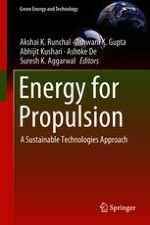This research book provides state-of-the-art advances in several areas of energy generation from, and environmental impact of, fuels and biofuels. It also presents novel developments in the areas of biofuels and products from various feedstock materials along with thermal management, emission control and environmental issues. Availability of clean and sustainable energy is of paramount importance in all applications of energy, power, mobility and propulsion. This book is written by internationally renowned experts from around the globe. They provide the latest innovations in cleaner energy utilization for a wide range of devices.
The energy and environment sustainability requires a multipronged approach involving development and utilization of new and renewable fuels, design of fuel-flexible combustion systems and novel and environmentally friendly technologies for improved fuel use. This book serves as a good reference for practicing engineers, educators and research professionals.
